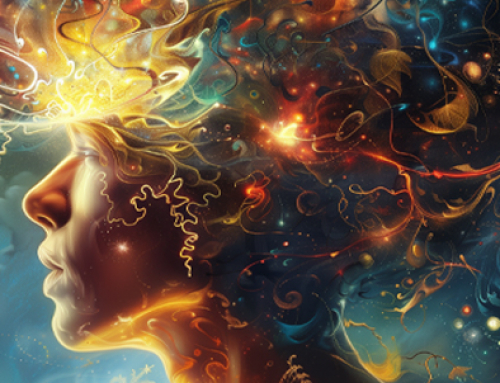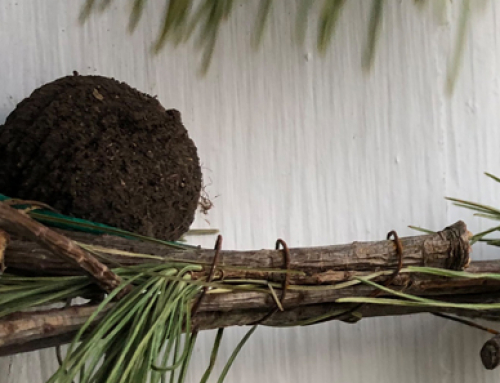After nine months, I’d had enough. Every level of life felt like a challenge—for what seemed an eternity. I needed a distraction. The image of tying a knot at the end of a rope, as the expression goes, and just hanging on came to mind. What I saw from that vantage was plenty of trauma: Sexual assault or abuse; accidents, or injuries to self or other; natural disasters; or being in a life-threatening situation. https://www.nami.org/Blogs/NAMI-Blog/November-2017/PTSD-and-Trauma-Not-Just-for-Veterans# I have been traumatized. I have sat with others experiencing trauma. I’m quite sure there is some trauma stuck within me. Doesn’t everyone know trauma?
Racial injustice had escalated throughout 2020, as other circumstances—the pandemic, global warming, and political manipulation and unrest—became more widespread. As it turned out, a December book study featured My Grandmother’s Hands – Racialized Trauma and the Pathway to Mending Our Hearts and Bodies. Was this the diversion I craved?
Before signing up, I watched a few YouTube interviews with the author, Resmaa Menakem, whose calm and sincerity simply ooze through the screen. A trauma healer and psychotherapist, he is also a Minnesotan. Plus, I felt like he was someone I could trust. Hooked! Reviews praise this book of mending soul wounds (trauma) as the essential change needed to bring all bodies together—something this country desperately needs. As a healer, I wanted to know more about the author’s new approach to healing suffering. My mind was filled with possibilities for healing all kinds of trauma. Imagine the exposed space after the release of all that negative energy.
In his book, Menakem specifically addresses the history of racial trauma and steps in the individual and collective healing journeys surrounding white body supremacy, black and brown bodies, and blue bodies (law enforcement). His main idea is that trauma is not of the thinking brain but lives in the DNA of body cells and is passed down from generation to generation. Trauma happens to someone. “When something happens to the body that is too much, too fast, or too soon, it overwhelms the body and can create trauma…Trauma is the body’s protective response to an event—or series of events—that it perceives as potentially dangerous. This perception may be accurate, inaccurate, or entirely imaginary.” My Grandmother’s Hands, pages 6-7. The author shares examples, questions, and exercises that offer healing of individual racial trauma, creating more room within the nervous system and confirming that trauma can be healed.
My lifetime experiences with black or brown bodies have been relatively few, but positive and accepting; however, my family of origin casts some shadows. This book has increased my awareness of white supremacy and the stark effects of it on all bodies. I am shocked at how much more I need to broaden my understandings and actions. Committed to investing time and energy in healing my personal racial trauma, I begin.
Up until the time of reading Resmaa’s book, I thought any ancestral trauma I might have had was linked to my 100% German heritage. Scientifically, I now know some of the persecution and murder of European Jews and other minorities as well as Hitler’s strategy of an Aryan master race during the WWII era was passed down through the DNA of my generations. For example, whenever I watch a movie like Kate Hamer’s “The Girl in the Red Coat,” I have strong empathy, am moved to tears, and have difficulty emerging from scenes. Not proud to witness those actions, I condemn this senseless price that humanity was forced to pay. I wish there had been less tyranny and greater inclusion.
Menakem offers five tools to counteract familiar, reactive behavior patterns to life situations: fight, flight, or freeze. Paraphrased, these translate to 1) A struggle is coming, 2) That struggle is picking up traction, or 3) I sense a growing uneasiness in my body. For me, a growing uneasiness in my stomach signals trauma over a part of my heritage that I was not responsible for, yet somehow, still lives in me. The five anchors’ tool suggests ways to stay with the discomfort of my inherited trauma and move through it. Besides the trigger of movies, my senses have a way of creating scenes from historical readings and my travel experiences.
As I close my eyes, it’s as if I can feel, hear, see, touch, and taste the despair and fear of the Jewish prisoners and the arrogance and cold-bloodedness of Hitler. Sadly, it is part of who I am, how I act and react, and how I interact with life. I always wondered why I had such intense emotions relating to the Holocaust or to Hitler. Now, however, I know that I can set an intention to heal from my ancestral trauma.
Anchors 1-5 are paraphrased to show my experience of self-healing from trauma. See My Grandmother’s Hands, pages 167-175, for complete explanation.
Situation:
A billboard about a Holocaust exhibit at the Minnesota Institute for the Arts (MIA) triggers uneasy feelings in my body. I sense a tightening of my stomach muscles. I set an intention to work with my ancestral trauma, to heal from it.
Anchor 1
The discomfort of guilt, shame, and fear loom over me. I stop thinking. I begin to soothe myself by humming, rocking, or rubbing the area just above my navel. After about ten minutes, my mind and heart are quiet and calm.
Anchor 2
Then I notice sensations in my body. My stomach is clenched, a headache targets my temples, and pain attacks my left neck area. Guilt, shame, and fear accompany the pain. I try not to react to what I am feeling, so I repeat the names of the areas of my body that house the discomfort: stomach, temples, left neck area. Over and over.
Anchor 3
I accept the guilt, shame, and fear (discomfort) of my inherited trauma and stay with it as long as I can feel it. I do not fight, flee, or freeze. Reacting does not help me work through the trauma. Instead, I allow the discomfort to enter my body. I feel it and remain with it, no matter how unpleasant. I do not analyze it or think of strategies to overcome it. I don’t think! It is a natural inclination for the body to want to maintain stability. I focus on my body to accept, experience, and move through the discomfort—until it changes. It will change. It always does. However, it may take some time. I commit to waiting.
Anchor 4
I continue to stay with the guilt, shame, and fear (discomfort) and feel my way, moment-by-moment, as things unfold. I also allow uncertainty and doubt, knowing they are just passing feelings. I respond to discomfort (guilt, shame, and fear) from my highest Self and deepest truth. I don’t judge or expect others to help. Healing is instinctive. I continue to trust the process. For me, it takes about forty-five minutes before the discomfort lifts.
Anchor 5
I clear any remaining energy surrounding the discomfort by doing one of the following activities: shaking my body or yelling for three minutes; dancing or brisk walking for twenty minutes.
I am so excited to experience the lifting of some of my ancestral trauma. I feel more resilient and empowered, with a more expansive (and relaxed!) nervous system. If guilt, shame, or fear start to rear their ugly heads when my life connects with people who are Jewish, with documentaries about that era, or with readings on a similar topic, I will not fight, flee, or freeze. I’ll calmly repeat the five anchors’ exercise. Having this tool gives me a choice to privately identify my own trauma, to reduce trauma at my own pace through tools and exercises, and to become a more empathetic and loving family and community member because I have done the work of change. Now it’s time to heal white supremacy.
From a higher vantage: Reduce trauma overload—it’s holding you back! Take plenty of opportunities in the new year to send trauma on its way. Seize Resmaa Menakem’s book, My Grandmother’s Hands. Listen to your body. Learn from its wisdom. Experience healing and ease.
@ 2020 in the thick of things






